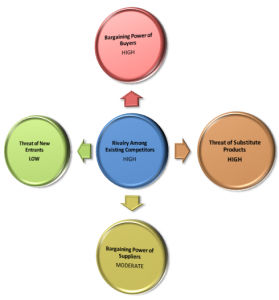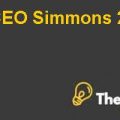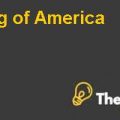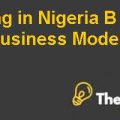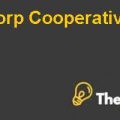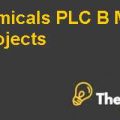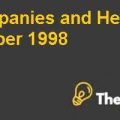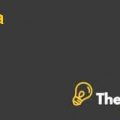Cons
- Managers have to report to shareholders: The prime con of going public is the addition in the owners of the company and obviously every owner has the right to access the detailed information of the company.
- Risk to lose company culture through focusing on short-term goals: The owners or the shareholders of the company through their interference in all the matters of the business can create a threat to the company culture.
- Additional legal regulations and constraints: As described in the earlier section that the process of going public brings the additional legal regulations and constraints for the company and for the managers in the business.
Option 2) Remain Independent
Pros
- Keep founding story, company culture: As can be seen from the given case that the company has succeeded a lot in getting the returns as compared to the competitors from the founding story which they have revealed through using alternative channels to the customers, so by remaining independent this can prove the future success too.
- Remain control over employment of employees: The owners of the company through remaining independent can ensure the complete control over employees of the company.
- Benefit from extensive growth in future: Unlike in the case of going public the company has so many owners and the overall profit is distributed among number of owners, by remaining independent the founders of the company can gain the maximum benefit from the extensive growth in the future.
Cons
- Struggle to finance growth: In the case of remaining independent the company will always be in the case of cash shortage for every new potential project which the owners want to undertake for the future growth, this is fundamental con of not going public.
- Lack of outside business expertise: Currently the company has only few potential members whose skills are taking the business to the new growths. If the company goes public, through the addition of new owners in the business comes with new talents which can fill gap in taking the business to new heights.
- Lack of capital to invest into advertisements, research: As it is evident from the case that the company is requiring extensive marketing for its juice products which requires a huge capital to invest but the company is lacking additional capital due to not going public.
- Not able to benefit from economies of scale: Managers due to remain independent lack one of the best advantage of not getting the economies of scale due to limited production.
Option 3) Selling the company
Pros
- Company would be in hands of more experienced managers
- Nantucket Nectars could get appropriate financing
- Company could grow rapidly
Cons
- Managers lose control over employee employment
- Nantucket Nectars risks to lose competitive advantage
- Keeping negotiations secret, ownership structure in which initial investors owns 55% of company
Porter 5 forces
Bargaining Power of Buyers (HIGH)
- No switching cost
Bargaining Power of Suppliers (MODERATE)
- Need for quality ingredients
- Have a good relationship with their current suppliers
- Other suppliers are available but quality of ingredients are inferior
Threat of Substitute Products or Services (HIGH)
- The proliferation of brands and flavors distract/tempt even the most loyal juice drinkers
- Promotions and new flavors entice new consumers to "shop around
Rivalry among Existing Competitors (HIGH)
- New Age Beverage industry was the latest battle ground in the Cola wars
- Over 100 companies vying for market leader position
Threat of New Entrants (LOW)
- Blocking of smaller players from shelf space
- Undercutting prices to flood the market (aka dumping)
- Placed emphasis on already existing strong brand and image
- "Industry dynamics and the fast-paced changes within the industry really decrease the probabilities of an early entrants success"
- What are the key relationships that have helped Tom and Tom build this business to date?
The key points that have helped the Tom and Tom to build this business to date are
For expanding the business
They decided to make use of an old fraternity house and utilized that as their company headquarters. This expansion was very beneficial for the company, so that the business can grow and more employees who were needed would join.
Team work
The juice guys tom and tom wanted to create an environment that was non-hierarchical, casual and without job-titles.
Employee Motivation
It is only the human resource that can give the competitive edge to any organization, the founders of the company better understand this phenomenon and is therefore keep on motivating their employees on their efforts which is the key success factor for the business.
Customer feedback
Tom first and Tom wanted their consumers to get involved with their decision making process with relation to the production of juice.
Organizational structure
| Innovation and risk taking | HIGH |
| Attention to deal | MODERATE |
| Outcome/ result orientation | MODERATE |
| People orientation | HIGH |
| Team orientation | HIGH |
| Aggressive (comp/coop) | COOP |
| Stability | MODERATE |
Competitive advantage
Unique story of how Nantucket Nectars came to be
-Made of real cane sugar rather than high fructose corn syrup
-Used 4x the amount of fruit juice instead of relying on water and artificial flavorings
-Offered full line of 100% unsweetened juices
-Offered sizes that competitors did not developed 27 different flavors throughout 3 product lines
Combining all these features have helped the Tom and Tom to build this business to date.
- What is the value of the company based on the information provided in the case?
Based on the information provided in the given the value that has been taken is based on the DCF technique moreover from the EBITDA Model as follows:
Quantitative Analysis
| Based on the Discounted Cash flow Technique | |||||||
| WACC | 15% | ||||||
| TERMINAL GROWTH | 6% | ||||||
| 1996 | 1997 | 1998 | 1999 | 2000 | 2001 | 2002 | |
| FCF | (402) | 1,291 | 2,680 | 3,614 | 6,319 | 8,916 | |
| TERMINAL VALUE | 105010.6667 | ||||||
| NET FCF | (402) | 1,291 | 2,680 | 3,614 | 6,319 | 113,927 | |
| VALUE OF THE BUSINESS | $56,850.38 | ||||||
| FIRM VALUE | $81,789.38 | ||||||
| EQUITY VALUE | $78,471.38 | ||||||
| Based On EBITDA Model | |||||||
| EBIT | 2,025 | ||||||
| Depreciation and amortization | 209 | ||||||
| EBITDA | 2,234 | ||||||
| EBITDA multiple | 16.7 | ||||||
| VALUE OF THE BUSINESS | $ 37,307.80 | ||||||
PORTER’S 5 FORCES MODEL
This is just a sample partical work. Please place the order on the website to get your own originally done case solution.

